Prudent speed limits? Impossible in the U.S.
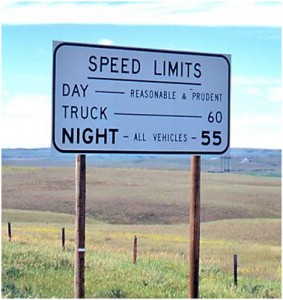
From 1995 to 1999, Montana lacked a maximum speed limit, advising drivers to travel at a “reasonable and prudent” speed during the daytime.
The U.S. Interstate System
Since the beginning of the 20th century, personal vehicles have allowed quick travel across the United States. The Model T, an early affordable car, had a top speed of 45 mph. People traveling across the country found themselves on unpaved roads better suited to horses. The ensuing decades saw changes in the quality of both cars and roads, making speed limits and law enforcement necessary.
| United States | Germany | |
| Highway | US Interstate Highway System | German Autobahn |
| Length of Highway System | 47,182 mi (75,932 km) | 7,965 mi (12,800 km) |
| Maximum Speed Limit | Varies by state; rural western Texas has highest in the nation at 80mph (129 km/h) | None for cars and motorcycles; recommended speed limit of 130 km/h (81 mph) |
| Speed Limit Signage | In MPH
Maximum Speed Limit Signs on US Interstate (89 km/h & 120 km/h) |
In KM/H
 Advisory Speed on German Autobahn (62 mph)  Minimum Speed (50 mph) |
| Road Fatalities 2010 | 32,885 | 3,648 |
| % Drivers wearing Seatbelts | 84% | 98% |
| % Passengers wearing Seatbelts | 74% | 97% |
| % of Population w/ Driver’s License | 70% | 77.5% |
Dwight D. Eisenhower was the force behind the largest road endeavor ever attempted. At a shocking 47,182 miles, the United States Interstate Highway System is the largest network of roads in the world and one of the largest-scale public projects ever. Speed limits on these highways vary from 35 mph in heavily urban areas of New York to 80 mph in certain parts of Texas and Utah. Despite this variation, speed limits have seen many changes since the Interstate first opened in 1956. This includes a nationally imposed maximum speed limit of 55 mph that was repealed in 1995, to the introduction of Montana’s “Reasonable and Prudent” speed limit, which bears a striking similarity to the speed laws of Germany’s Autobahn, the inspiration of the US Interstate.
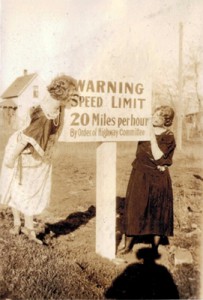
A pre-standardized Highway Speed Limit sign from the 1930s. Size, shape, text, and color must now be uniform on all US Highways.
The Autobahn
The Autobahn, which first opened in 1935, is Germany’s national road system. It was the first large-scale highway system ever successfully attempted and has no mandated speed laws for cars or motorcycles on its roads. While commercial vehicles and trucks are restricted in speed, their maximum speeds far exceed the United States’ national average. Signs on the Autobahn propose a suggested speed of 130km/h or 81mph, higher than the fastest maximum speed limit in the US.
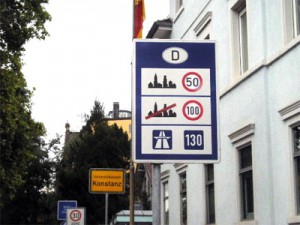
A speed limit sign in Germany showing that urban driving is a 50 km/h limit, rural is a 100 km/h limit, and the Autobahn has a suggested speed of 130 km/h.
Accident Statistics in the United States and Germany
While the US often attributes high speed to many fatalities and accidents on the roads, the 2011 Road Safety Annual Report tells a different story. The number of road fatalities in Germany in 2010 amounted to 3,648 – compared to a striking 32,885 in the United States. This huge disparity has many contributory causes, including culturally accepted standards of driver behavior.
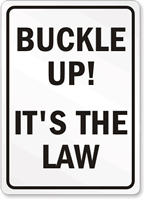
32 states mandate seat belts for all passengers, but only 84% of drivers and 74% of passengers obey this law.
Germany has had a compulsory seat belt law in effect since 1976 for drivers and passengers in the front seat. In 1984 the law was extended to included passengers in the back seat. The 2010-2011 data find that 98 percent of drivers and 97 percent of passengers wear their seat belts in Germany.
In the United States, seat belt laws are regulated by state and mandated for drivers and front-seat passengers by only 32 states. The International Road Traffic and Accident Database (IRTAD) found that only 84 percent of drivers and front-seat passengers wore seat belts, with an even smaller 74 percent wearing seat belts in the backseat. It’s this kind of carelessness that draws the distinction between German and American drivers. While German drivers are known for dutifully following road rules and safety regulations, Americans are much more lax with traffic laws despite facing much higher penalties than German drivers.
This lack of respect for road laws creates a terrifying environment for new or cautious drivers and a truly dangerous environment for all drivers. In fact, the IRTAD finds 10.6 Americans for every 100,000 died in 2010 due to car accidents, as compared to 4.5 deaths for every 100,000 Germans. Statistics like these highlight the importance of respecting road laws, limits, and buckling up. In the United States, an estimated 70 percent of residents are licensed drivers. In Germany, 77.5 percent. These numbers get only more surprising with the countries’ considerable differences in driver’s license tests.
Licensing Drivers
In the U.S., potential drivers must take a simple written exam highlighting the importance of signs, say they’ve driven the state’s required amount of hours, and take a short practical exam displaying simple skills like turning and stopping. In Germany, a license costs over $2000, and requires 25 to 45 practical driving hours as well as 12 hours of theory under professional instruction. With these laws, the lack of a speed limit seems negligible, especially considering the disproportionate rate of fatalities.
The question remains whether speed limits are useful in preventing fatalities. In 1973, President Richard Nixon signed a bill in response to an oil crisis that lowered the maximum speed limit to 55 mph. Its main purpose was to lower overall consumption of gasoline, but the laws remained in effect even after the crisis under the assumption that it was safer. It wasn’t until 1995 that the laws were fully repealed. Although initially there was a decrease in the number of accidents on the road, the rate did not remain significant and the imposed speed limit did not greatly affect road accidents.
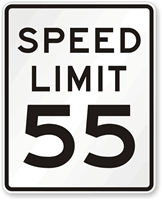
In 1973, President Nixon enacted a national maximum speed limit of 55 mph in hopes that it would lower gas consumption. The law was fully repealed in 1995.
While it is inconclusive whether speed limits decrease the amount of road fatalities, it is clear that following signs can be preventative of major accidents. Since we aren’t in Germany, we can avoid accidents by maintaining a minimum speed in appropriate traffic and being mindful of driving conditions, following seat belt laws, and driving responsibly. By following the rules of the road, it is possible to drive quickly and safely.
Category: Automotive, Resources, Traffic law


















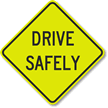


Comments (1)
Sites That Link to this Post